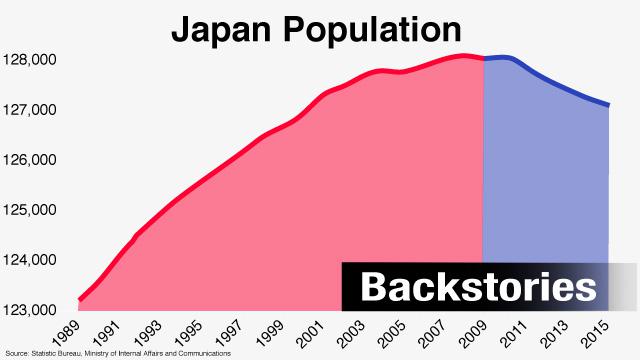The decline in population is especially severe in rural areas. The clip below shows the country’s population trends in the last 25 years. The blue areas, where the population has declined, have increased mostly in rural areas. The red areas, where the population has risen, is concentrated in urban areas.
NLI Research Institute researcher Kanako Amano says, "The reason for polarization is a changing industrial structure and a rise in the college-going rate. The number of people who engage in desk work has increased as a result, and these people have moved to big cities."
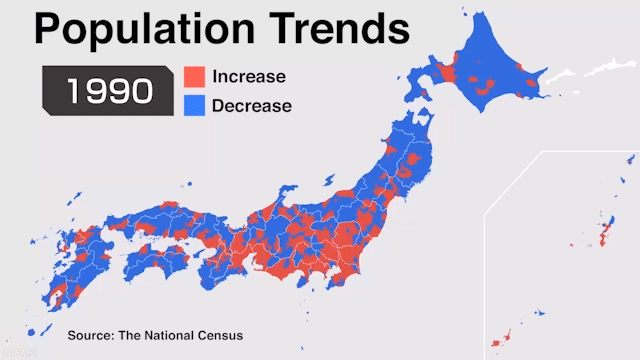
The National Institute of Population and Social Security Research estimates that Japan’s population will shrink to about 106 million in 30 years.
A comparison of the population in 2015 with that of a 2045 estimate shows almost all cities will experience shrinkage except for a few urban areas, such as Tokyo, Aichi and Fukuoka Prefecture. 94 percent of all Japanese local governments are expected to see a residential decrease.
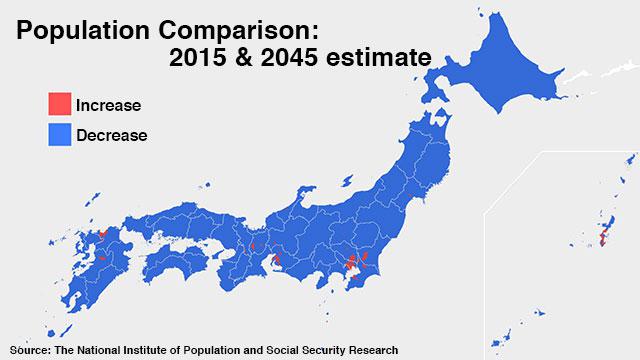
In some rural areas, residents are afraid their homeland will disappear. Kawakami Village in Nara Prefecture is one of them. The village is 95 percent mountains and forests, and forestry is a major industry. It had about 1,400 residents as of January 2019 -- almost half that of 30 years ago. Nearly 60 percent of inhabitants are age 65 or older.
The National Institute of Population and Social Security Research estimates that the population in Kawakami Village will be only 270 by 2045. That’s the biggest downsizing rate in the nation.
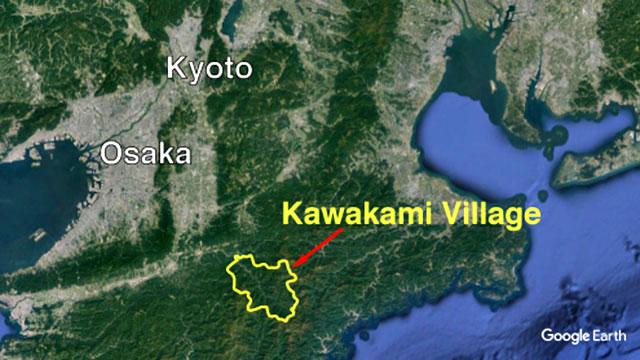
On March 2nd, an event was held for residents of the village to discuss its future. Ko Fujiyama, head of the Research Institute for Sustainable Community who has been providing expertise and advice to the village, explained survival measures. He said that in order for the village to maintain a population of over 1,100, the birth rate and the number of new residents need to increase, and residents in their late teens to early 20s leaving the village need to decrease. Fulfilling such conditions requires great effort.
Fujiyama asked the event's 13 participants to discuss the advantages and disadvantages of living in the village and their ideal future. The disadvantages included inconveniences including the distance to supermarkets and schools, while the good points included the rich nature and supportive community. Some said that there were many healthy elderly residents, so they wanted to promote the town as a place where it was possible to live a long, healthy life.
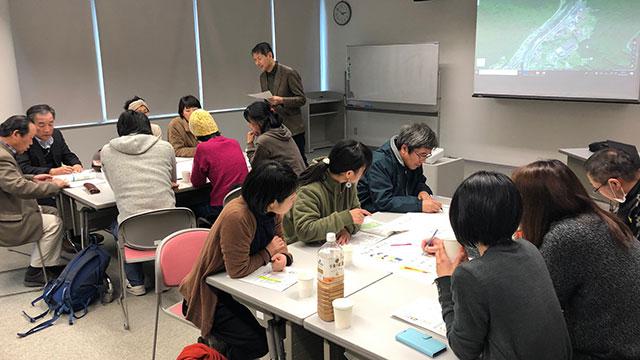
During the discussion, Fujiyama showed unexpected data -- young people who choose to live in countryside are increasing, with almost 330 underpopulated municipalities of 800 showing a rise in female residents in their 30s.
Fujiyama says, "I feel the country changed after the 2011 earthquake and tsunami. Before that, people wanted to live on the top floors of high-rises in Tokyo. They lived to make money. But that's no longer the case, especially for women around the age of 30. People are now making money to live, and they're planning for life until the age of 100."
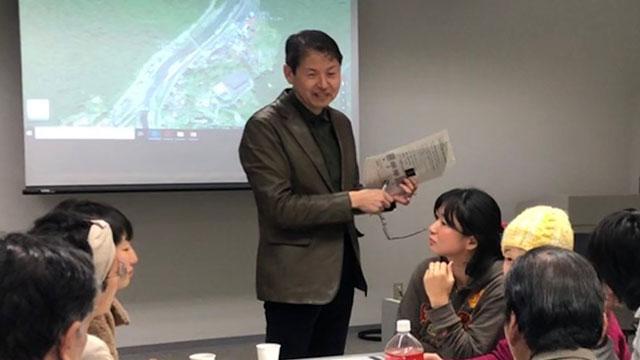
Katsunori Matsumoto, a Kawakami Village official, says that the local government is making an effort to increase new residents in recent years. It is trying to introduce specific jobs and focus on families with small children instead of promoting sightseeing spots. "We are seeing some progress," he says.
In response to the population decline, the nation’s government is promoting work-style reforms and trying to get women and elderly workers to play more active roles. A shift in people’s values may change the country’s demographic trends.
